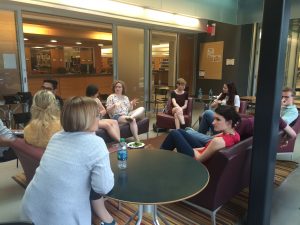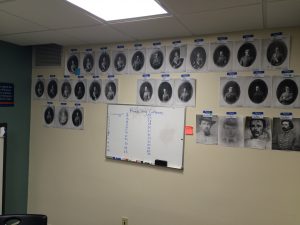So sometimes DH just happens.
What We Did Here: Activism at Gettysburg College didn’t even exist until last Wednesday. During our weekly catch-up with the fellows, we discussed the Preserve the Baltimore Uprising 2015 Archive Project and how we should probably find a way to collect digital materials related to activism on campus, especially in light of the recent election. Lauren’s research hit some roadblocks over the summer when trying to find relevant materials about student activism and social justice movements at Gettysburg, in part because there just weren’t primary source materials available to her. A site that allowed for crowd-sourced contributions of stories and media would be a good first step in making sure materials related to student activism would be collected in a central location. After the meeting, I created an Omeka site with a few plugins and figured it would be something to tinker with until I had some time to do some actual project management and work on the interface, you know, the responsible things you do when planning and implementing a project.
Then, Thursday evening, students crashed the faculty meeting and began a sit-in on Penn Hall steps. Something was happening.
To hell with a plan.
Friday morning, Lauren and Julia began their normal shifts. I showed them the skeleton site I had pulled together and they set to work on writing copy for it. Pulling from the Baltimore Uprising site for inspiration and some legalese, and drawing from Lincoln’s Gettysburg Address to find an appropriate title, by noon we had a vaguely working site that could collect digital assets from the campus community. Over our monthly fellows lunch, Keira, Lauren, Clint, Catherine, and I kept at it; we edited the copy and did some refining of the interface. That afternoon, we worked out some bugs and had something to show to the dean of the library, who gave the project her blessing and encouraged us further. By the end of the day Friday, we were handing out the URL and asking people to contribute.
Phew.
The immediacy of the events surrounding us, and sometimes involving us, inspired us to move quickly on this. In order to capture the energy of the moment, we had to have something in place now, not a month or two from now when finals were over and break was in full swing. So this is certainly a work in progress, but it does what we need it to do for now. And sometimes that’s good enough for the moment. We can plan later.
It’s amazing what this group can do.



